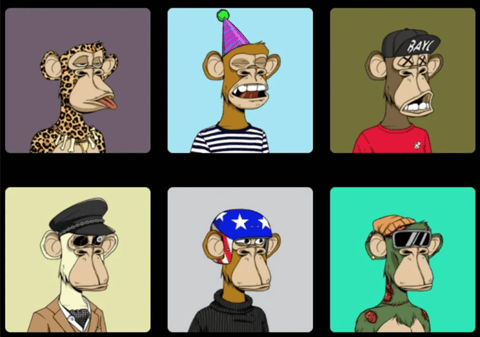NFTs are all over the news. More than $2 billion was spent on NFTs during the first quarter of 2021. Google trends data in September showed that interest in NFTs surpassed that in cryptocurrency. Jack Dorsey (co-founder of Twitter) sold his first tweet for over $2.9 million, Mila Kunis’ 10,420 Stoner Cats NFTs sold for a total of about $8.4 million in just 40 minutes in August 2021. Everydays: The First 500 Days, a piece of art by famed digital artist “Beeple”, sold for $69.3 million in 2021, the most expensive NFT sold. You have probably seen the pixelated faces of CryptoPunks or the gorilla images of the Bored Ape Yacht Club (see below) on your social media. You may be confused as to why people are spending millions of dollars on these “things.” I don’t have an answer to that question (mainly because I don’t understand why they’re selling for millions of dollars) but what I can do is explain what NFTs are and how they’re elements in our emerging digital universe.


What Is an NFT?
NFT stands for non-fungible token. Doesn’t make it any clearer, huh? Let’s break it down:
Non-fungible means that it’s unique and can’t be replaced with something else. For example, a US dollar is fungible. It can be exchanged or traded for another dollar.
Each token is a digital code representing a specific, unique item. This item could be art, music, in-game items or videos. They are bought and sold online, frequently with cryptocurrency. Since each NFT is generally one of a kind, or at least one of a very limited series, NFTs create digital scarcity which is opposite of most digital creations that almost always have an infinite supply. Economically, a limited supply should raise the value of a given asset, assuming it’s in demand.
How Does an NFT Work?
NFTs exist on a blockchain, which is a distributed public ledger that records transactions.
NFTs are like physical collector’s items, only digital. So instead of getting an actual painting to hang on the wall, the buyer gets a digital file instead.
They also come with exclusive ownership rights (only one owner at a time). The blockchain and NFTs’ unique data code makes it easy to verify their ownership and transfer tokens between owners.
What Are NFTs Used For?
Assume you are a famous artist and you just completed what you consider to be a masterpiece. To sell the masterpiece, you’d probably have to rely on a gallery or auction house. Let’s say that you sold this masterpiece for $50,000. Years later, the masterpiece sells for $150,000. How much of that $100,000 gain do you, as the creator of the masterpiece, receive? $0. Your transaction was complete when you sold the painting for $50,000. No matter how much the masterpiece appreciates over time, you’ll be left out of the profits.
Let’s say that you sold the masterpiece as an NFT instead. First, you can sell it directly to a fan of your work and cut out the gallery or auction house (allowing you to keep more of the profits). In addition, you can program in royalties so you’ll receive a percentage of sales whenever the masterpiece is sold to a new owner.
Are NFTs an Investment Bubble?
Some experts say NFTs are a bubble ready to pop, like 17th-century Dutch tulips, dotcom stocks or Beanie Babies. With the amount of money being spent on them, it is easy to understand that logic.
I think the case can be made that they’re not a bubble. People have been collecting art, music, baseball cards, etc. for centuries. At their core, NFTs are no different – they’re simply digital rather than physical.
Time will tell who is right but for now they are a part of our current digital universe.
Disclosure: This is not meant to be investment advice. This is not a recommendation to buy or sell NFTs; it is simply to provide information on what they are and how they work.


